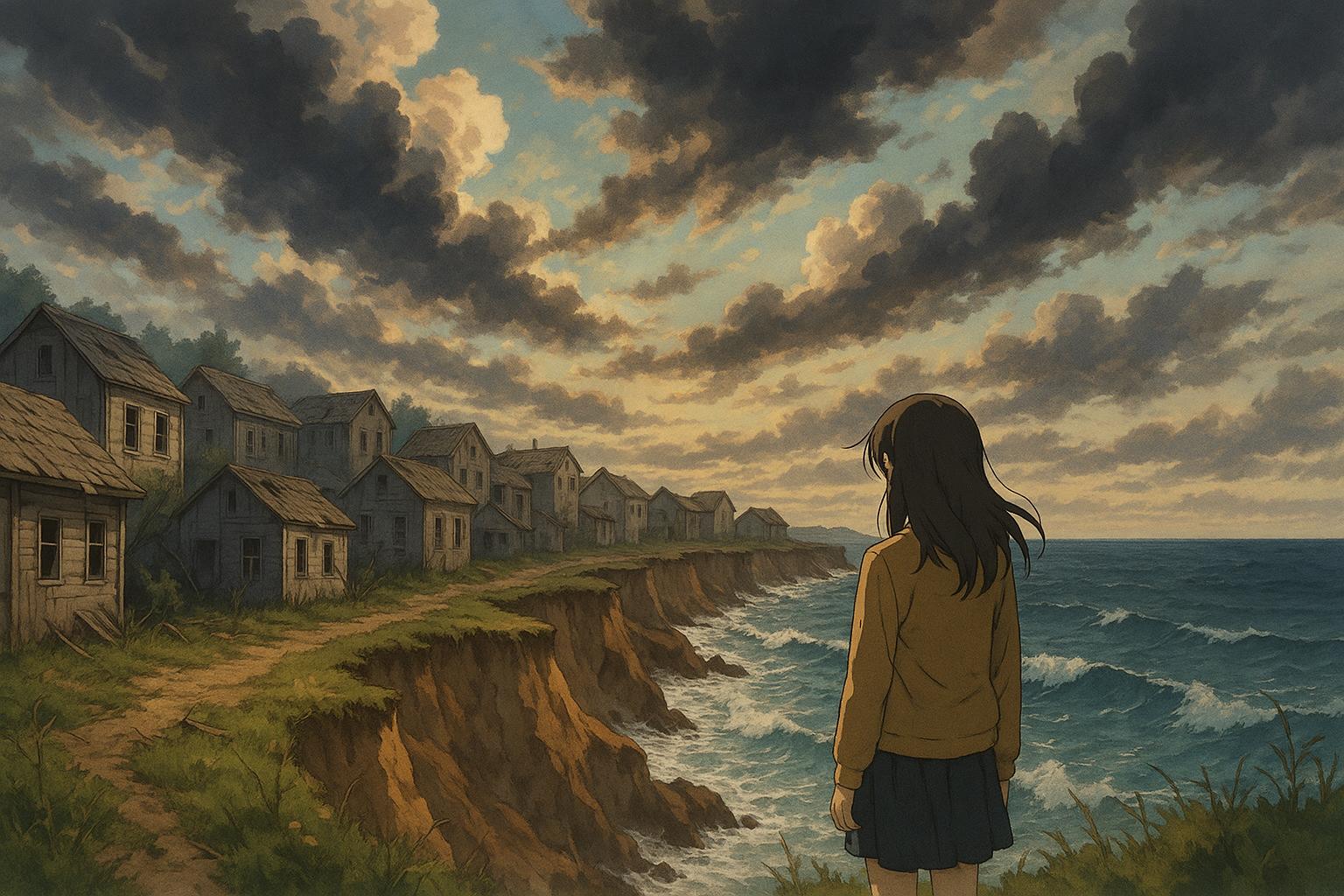Happisburgh, a charming seaside village on the Norfolk coast, faces an existential crisis as coastal erosion threatens to swallow it whole. Since the 1990s, the village has lost over 250 metres of its coastline, a process that experts warn could lead to its complete disappearance by 2050. Dr Ian Richards, a climate analyst with a focus on coastal erosion, noted, "What’s happening in places like Happisburgh isn’t just a prediction - it’s a process that’s already underway.” The impacts are stark: homes have been lost, roads have disappeared, and the cliff line is receding faster than anyone anticipated.
The geological composition of the local cliffs, primarily boulder clay, exacerbates the erosion issue. When wet, these cliffs tend to slump, thus increasing the vulnerability to erosion. While many residents have already abandoned their homes, this doesn’t deter the village’s popularity as a holiday destination. Local business owner Maria Jennings observed, "We know the risks, but we also know the beauty. People come here to relax, enjoy the beach, and walk the coast." Tourists like Emma Cartwright from Birmingham express a deep appreciation for the area, acknowledging the erosion while simultaneously relishing the serenity it offers. "You’re aware of the erosion, but that makes you appreciate it more. We treat every trip like it might be the last," she shared, highlighting an emotional attachment to the landscape despite its precarious future.
Travel experts have noted this trend as part of a broader phenomenon whereby visitors seek out less commercialised, authentic experiences. Ski Vertigo commented on the allure of places like Happisburgh, noting the increasing appeal of such destinations amidst the looming threat of climate change. In addition to the personal narratives of locals and visitors, the statistics of erosion paint a grim picture: in some areas of Norfolk, the rate of erosion has reached over four metres per year. With more than 200 villages and towns in East England under threat, the urgency for action has never been clearer.
Historical context reveals a long struggle against erosion in this region. Coastal defences, initially constructed in response to the catastrophic 1953 floods, are now inadequate in the face of climate change’s increasing pressures. Furthermore, significant sections of the cliffs have been designated as Sites of Special Scientific Interest (SSSI), which complicates any potential protective measures. This combination of natural vulnerability and regulatory constraints contributes to the dire prediction that additional 100 metres of land could be lost in the next two decades alone.
As Dr Richards remarked, “Places like Happisburgh are part of our cultural heritage. We should visit, support the community, and learn from it—because once it’s gone, it’s gone.” This sentiment underscores not only the loss of place but also of history, as archaeological findings in the area reveal evidence of early human presence, further enriching the cultural tapestry that stands to be erased.
Recent discussions around tourism within the UK suggest alternatives to international travel, with holiday home experts highlighting more accessible destinations that may evoke the feeling of exclusive retreats. Yet, as Happisburgh fades, it raises a critical question about the sustainability of such tourism strategies in the face of climate change: can we reconcile our desire for exploration with the urgent need to protect our threatened landscapes?
The situation in Happisburgh stands as both a stark reminder and a wake-up call. The community may still draw visitors, yet the tragedy of potential loss hangs heavy in the air. With the balance between appreciating its beauty and confronting the inevitable erasure becoming increasingly tenuous, Happisburgh invites us to reflect on what we are willing to lose in the name of leisure and nostalgia.
Reference Map:
- Paragraph 1: 1, 3, 4, 6
- Paragraph 2: 2, 4, 5
- Paragraph 3: 1, 3
- Paragraph 4: 1, 4, 6
- Paragraph 5: 1, 3, 5
- Paragraph 6: 1, 2, 5
- Paragraph 7: 1, 2, 3
Source: Noah Wire Services
